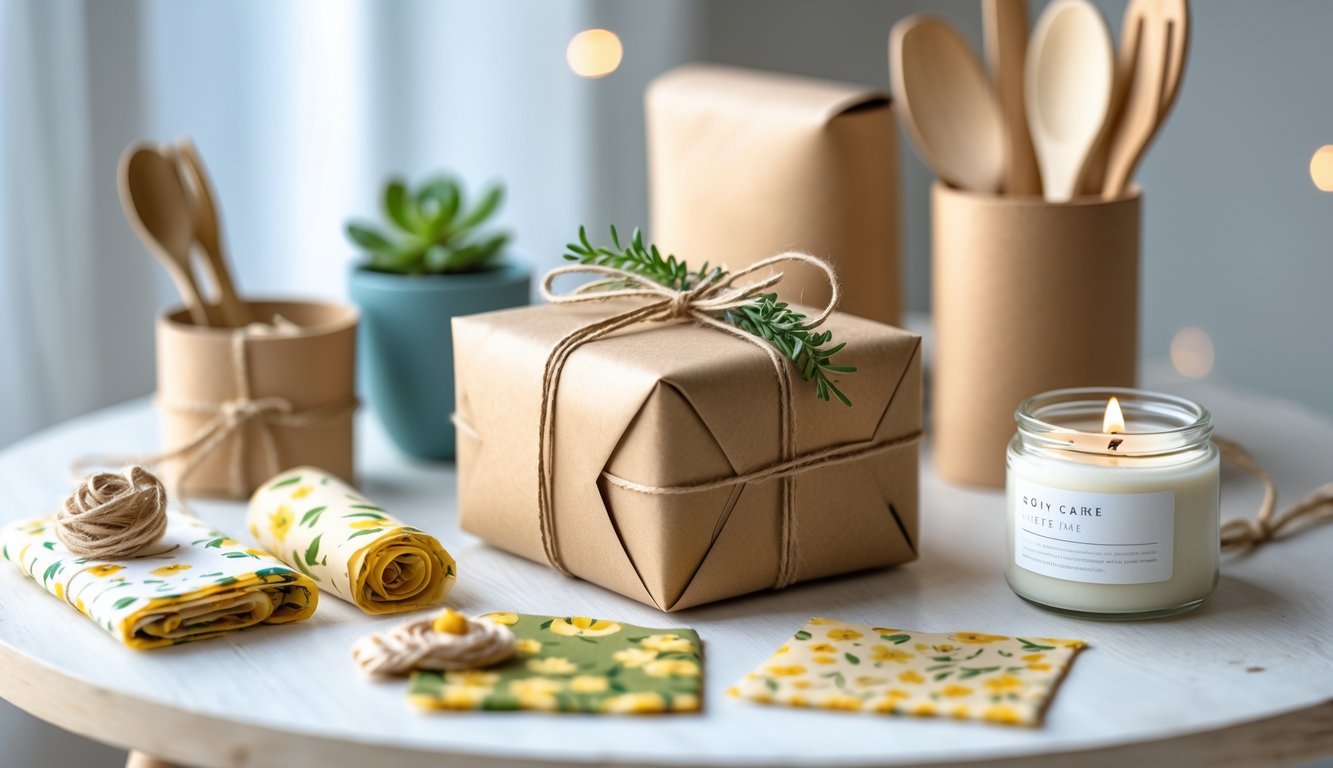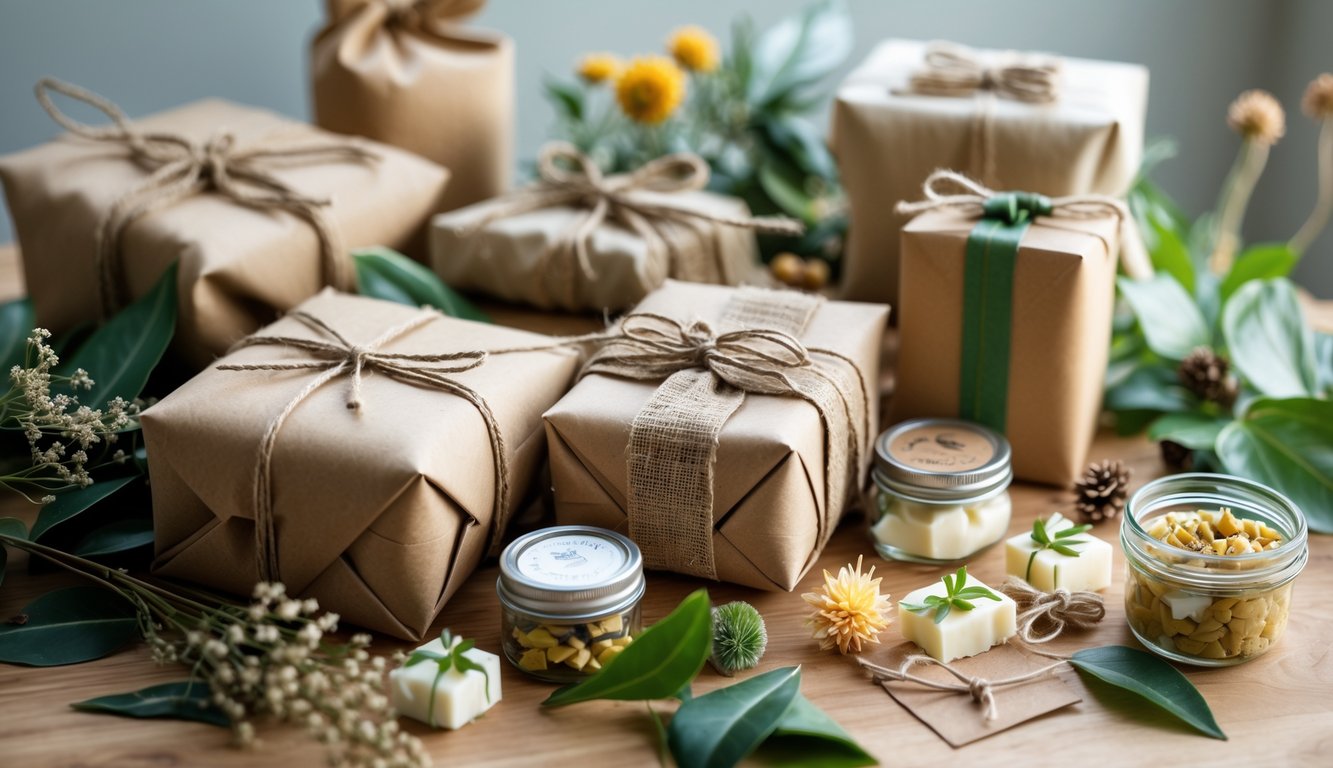
Seriously, why does every holiday shopping spiral end with me reading about “eco gifts” for the fifth time? My cousin keeps ranting about bamboo socks being superior—look, I’ve worn them, they’re fine, but let’s not pretend they’re the second coming. Now it’s like the whole internet’s obsessed with sustainable gifts, but not just the old reusable mugs or sad fair-trade chocolate bars. Suddenly, everyone’s googling “eco-friendly,” “sustainable,” and “biodegradable gifts,” and—get this—searches are up 48%. Etsy’s probably printing money off this, and I can’t decide if I’m impressed or just exhausted. Last year, all the options felt like a beige blur (there’s a whole industry report if you’re into reading about recycled wrapping paper). Lasakan Cholayil at Sadhev dropped this line: “This shift toward a sustainable culture isn’t just a trend; it’s a profound transformation in the ethos of consumerism.” I mean, if my dermatologist cared this much about sunscreen, maybe I’d stop burning my face every summer.
So, what’s actually selling? Reusable notebooks, compostable phone cases, and—wait for it—luxury vegan Ayurvedic skincare hampers. Apparently, these are beating out the “sock of the month” club. Every time I go looking for something that screams “cool millennial,” I end up lost in stories about recycled gold tennis bracelets that cost more than my rent, or pillowcases made from organic cotton that supposedly fix sleep and the planet (except, static cling). Is the real trend just us being bored of all the same stuff, or am I supposed to be shocked that even toothbrushes are getting eco-makeovers?
You see it everywhere—brands slap “thoughtful” on everything, and suddenly bamboo sheets are pitched as the new love language (sorry, grandma, you’re still getting slippers). I gave compost boosters as stocking stuffers once; everyone thought they were weird mints. Whatever direction you scroll—recycled, vegan, “planet-forward”—there’s this low-key promise that giving green is not only cooler, but weirder, and that’s apparently the whole point now. Tilted Map’s sustainable gift guide calls it “messy joy,” which—yeah, that tracks.
Understanding the Surge in Sustainable Gift Ideas
I crammed this soap made from coffee grounds into my brother’s stocking a few years back, and now everyone’s acting like I invented compostable packaging. Coworkers drop “sustainable lifestyle” in meetings, and strangers quiz me about recycled wrapping. The sustainable gifting market is ballooning, and I can’t walk past a farmers market without tripping over another recycled tote bag.
Defining Sustainable Gifts
Honestly, I keep buying plant-based candles and reusable bottles, telling myself it’s “better,” but what even counts as “sustainable”? It’s mostly just less plastic, less junk, more stuff that doesn’t fall apart right away. Linen grocery bags, solar chargers, T-shirts made from post-consumer recycled fibers—every label promises a smaller footprint. But then I spot bamboo cutlery wrapped in plastic. How does that make sense? Real sustainable gifts actually last and don’t just create a different kind of garbage.
Tables and charts? Forget it. The only test is if I’m still using that biodegradable phone case a month later. Experts love to quote lifecycle assessments, but let’s be real—if your “eco” thing breaks in a week, you’re just buying trash. Green America says 75% of shoppers claim they buy “eco-friendly gifts” once a year. Maybe, but how many of those gifts end up in the landfill anyway? Longevity’s everything.
Why Sustainable Gifting Is Trending
Bring up plastic and someone will start ranting about “woke” marketing. But there’s more to it. Forbes says 40% of Gen Z buyers actually care about eco-impact when they pick gifts, so obviously every store is scrambling to sell upcycled whatever. Still, try giving a secondhand book at a wedding and watch everyone’s faces. Meanwhile, handmade and upcycled gifts are everywhere.
After COP27, my inbox exploded with pitches for “minimalist” packaging. Some people think it’s all just PR. Others hoard beeswax wraps and stoneware mugs. Maybe the appeal is that these gifts push back—at least a little—against mindless buying, not just the “save the turtles” memes.
The Role of Social Responsibility in Gift Choices
Every time someone posts a zero-waste Christmas haul, the comments section turns into a fight about virtue signaling. But apparently, group action matters: McKinsey says 60% of US shoppers believe eco-friendly gifts show off your values, not just your taste in socks. Teachers and parents are using gifts to talk about supply chains and ethics now—stuff nobody cared about when I was a kid.
Donation gifts? Suddenly, those are everywhere. I gave my niece a card that planted trees, then had to argue about it at dinner. Social responsibility’s not just a “trend;” it’s changing what people expect from gifts. Or maybe it’s just a way for people like me to feel less guilty about all the stuff we buy. Who knows.
Zero Waste Gifting: Rethinking Packaging and Materials

Here’s the joke: most “eco-friendly” gifts still come buried in packaging you can’t recycle. Plastic-free, recycled, reusable—everyone says it, but I still end up peeling tape off my hands at 1 a.m. on Christmas Eve. There’s got to be a better way, right? Especially when you see the stats on single-use plastics.
Plastic-Free Packaging Alternatives
I ordered a mug last week. One mug. The box had enough bubble wrap to mummify my neighbor’s cat. Drives me nuts. But apparently, I’m not alone. The brands that actually care are ditching plastic for mushroom packaging, cornstarch peanuts, or seeded paper that turns into herbs if you plant it. If you haven’t tried it, it’s like magic—toss it in compost, it vanishes.
Environmental Packaging Forum says 72% of people want packaging they can recycle or compost at home. Zero-waste gifting means brown paper tape, cardboard, paper fillers—no more foam peanuts. Companies like Package Free get shoutouts on sustainability blogs for this stuff.
Now I just wrap gifts in old magazines or cloth scraps. Printed cellophane? Hate it. Even the big stores are rolling out plastic-free gift wrap—though you’ll only hear about it in nerdy corners like Sustainable Jungle’s zero waste lists—see for yourself. No more shiny mylar, please.
Recycled Materials in Gift Wrapping
Recycled wrapping paper should be easy, but try finding a roll that isn’t shiny or glittery. That stuff never breaks down. If I spot post-consumer recycled paper (FSC or Blue Angel label), I buy a year’s supply. It saves trees and water, and doesn’t feel like a waste.
I’ve wrapped gifts in inside-out shopping bags—my aunt called it “minimalist art.” Newer brands are pushing eco packaging made from recycled cotton, kraft paper, even wheat straw (yes, really—look here).
Nobody notices on the gift table anyway. Unless you’re obsessed with shiny stuff, recycled works fine and you don’t have to feel bad. Tried newsprint bows once—the ink rubbed off, but whatever, it composts.
Reusable Gift Presentation Ideas
This is where things get fun—reusable wraps changed my whole approach. Furoshiki cloths? They sound fancy, but honestly, they’re faster than tape and everyone wants to keep them (dish towel, scarf, lunch bag, whatever).
One friend griped that my scarf-wrapped gift felt like a hand-me-down, but then she used it for groceries. The logic’s simple: reuse what you’ve got. Baskets, glass jars, tote bags, metal tins from last year’s cookies—2025 zero waste gift guide says anything that gets a second life counts. Pillowcases, canning jars, shoe boxes—if it works, it works.
Best part? No trash mountain afterward. I cut up old maps for wrap—my dad thinks it’s genius, but maybe he just likes maps. Either way, less garbage, smaller carbon footprint, less guilt.